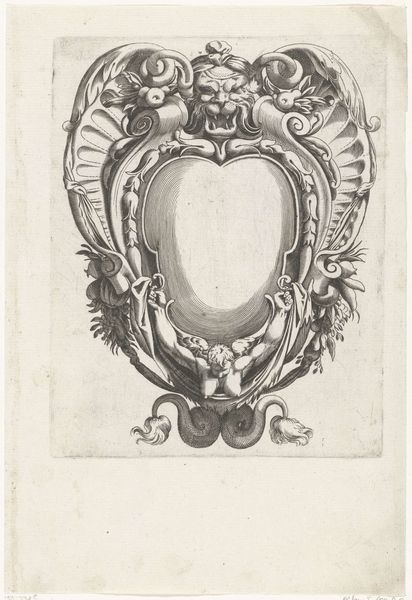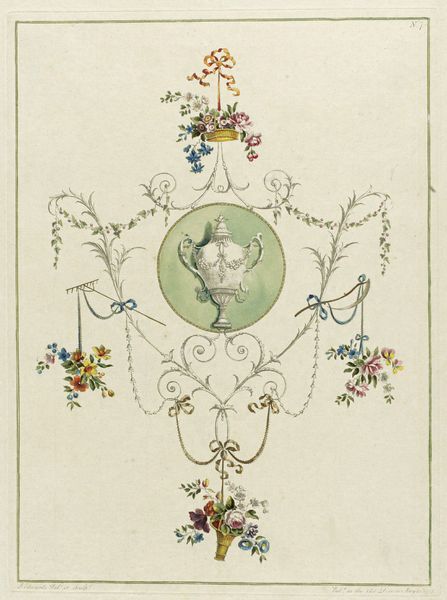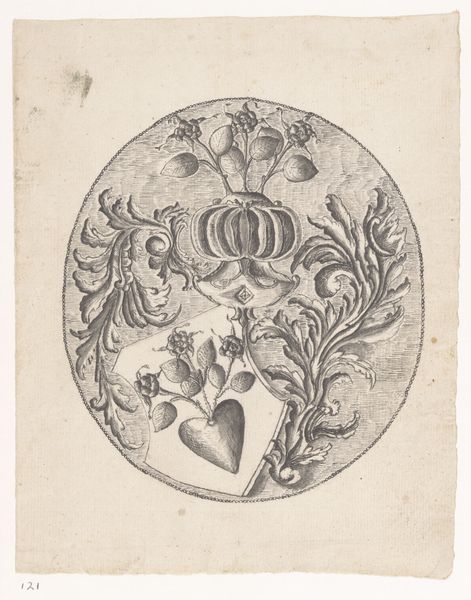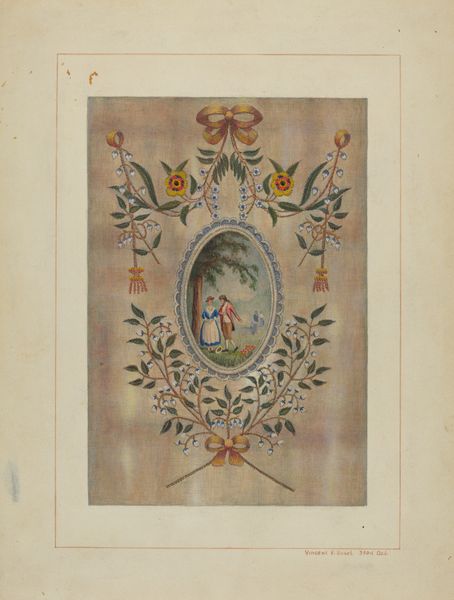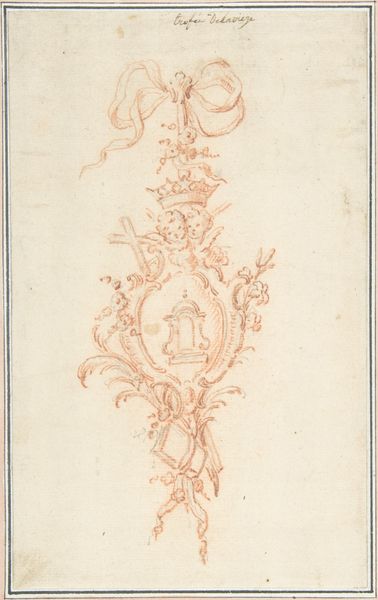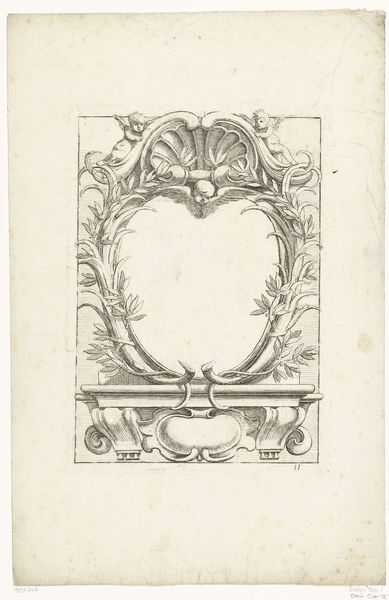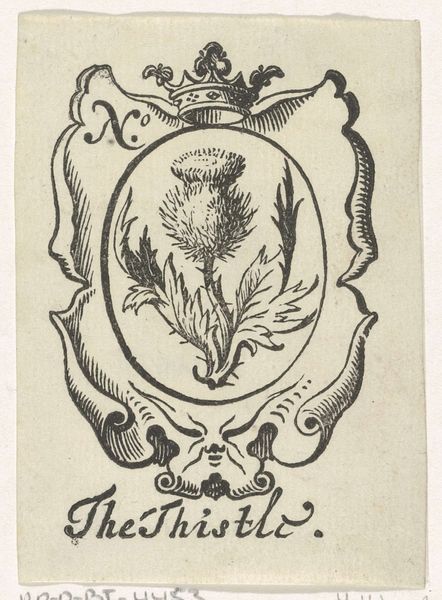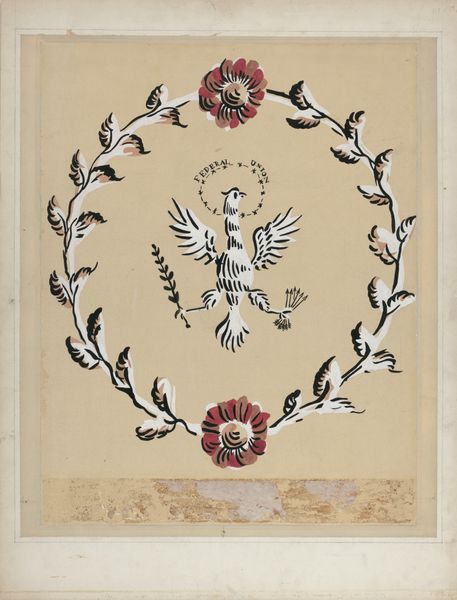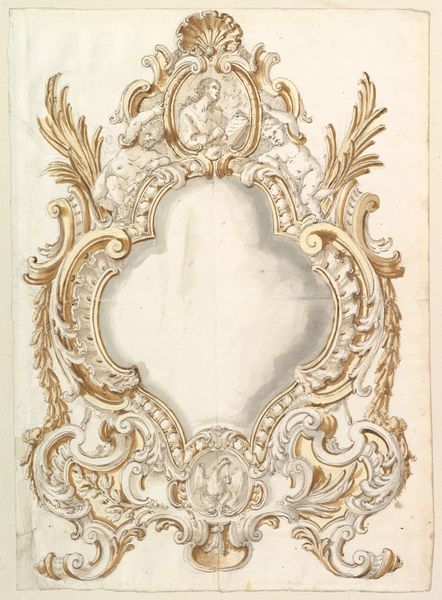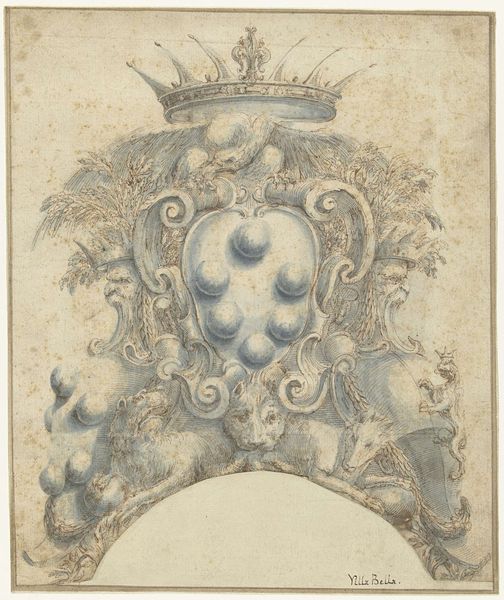
drawing, coloured-pencil, paper
#
drawing
#
coloured-pencil
#
dutch-golden-age
#
paper
#
coloured pencil
Dimensions: height 313 mm, width 204 mm
Copyright: Rijks Museum: Open Domain
Curator: Here we have "Wapen van de familie Ter Borch", or "Coat of Arms of the Ter Borch Family," rendered in colored pencil on paper around 1660 by Gesina ter Borch. It’s currently housed here at the Rijksmuseum. What's your initial take on this piece? Editor: Well, it feels remarkably gentle for a coat of arms. The soft colors and delicate details really undercut the usual visual declaration of power you'd expect. The cherubic figures, in particular, seem like an odd fit with the traditional symbolism. Curator: That's an astute observation. You're seeing a clear reflection of 17th century Dutch society in how heraldry evolves. As wealth shifts to merchant families and away from just the landed nobility, self-presentation through these kinds of emblems becomes a status symbol to claim your new position in society. The increased artistry speaks to a broader cultural interest. Editor: Exactly, so let's delve into the lion. Red, rampant—it evokes strength, courage. Yet, Gesina's rendering is… almost playful? And set against a golden field contained within that blue escutcheon—it’s a very striking triad of colors. Curator: Indeed. Now, notice the wreath. Olive branches signify peace and victory. Consider the context: The Dutch Republic had recently secured independence. These symbols speak to aspirations for enduring prosperity. Families wanted to brand their new economic and political freedom and standing. The display of personal emblems served that function, not for pure militaristic means. Editor: And above, there is that rather ornate crown—sitting rather heavily, held up precariously by the cherubs as it obscures what could be crenellations beneath, implying an actual castle. Crowns represent sovereignty, but this image, perched so high, feels more aspirational. The Ter Borch family had arrived but perhaps wanted even further social legitimization. Curator: Very insightful! And I think that's partly what makes this such a unique artwork, particularly coming from the hand of Gesina ter Borch. As a woman in the Dutch Golden Age, her involvement and vision in what was seen as "family branding" reveals so much about women's roles within Dutch family and commercial life at this time. Editor: A really great reminder that images always function within a complex social web. It changes my perception and now I read even more subtlety and personality in what I first regarded as just gentle. Curator: Absolutely, and I am even more fascinated by what might have seemed straightforward at first glance!
Comments
No comments
Be the first to comment and join the conversation on the ultimate creative platform.

